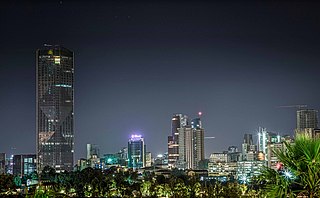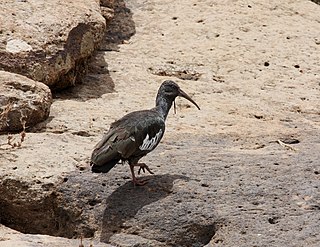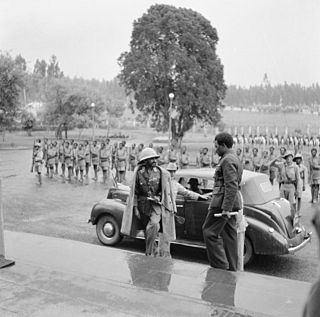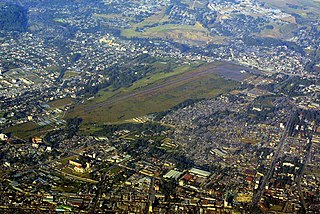
Addis Ababa is the capital and largest city of Ethiopia. In the 2007 census, the city's population was estimated to be 2,739,551 inhabitants. Addis Ababa is a highly developed and important cultural, artistic, financial and administrative centre of Ethiopia.

The mass media in Ethiopia consist of radio, television and the Internet, which remain under the control of the Ethiopian government, as well as private newspapers and magazines. Ten radio broadcast stations, eight AM and two shortwave, are licensed to operate in Ethiopia. The major radio broadcasting stations include Radio Fana a private station, Radio Voice of One Free Ethiopia, and the Voice of the Revolution of Tigray. The only terrestrial (broadcast) television networks are government owned and include EBC and other regional stations. In keeping with government policy, radio broadcasts occur in a variety of languages including Amharic, Afaan Oromo, Tigrigna, and more. There are also many video sharing websites which are a popular way of getting information as well as entertainment in Ethiopia.

Lake Langano is a lake in the Oromia Region of Ethiopia, exactly 200 kilometers by road south of the capital, Addis Ababa, on the border between the East Shewa Zone and Arsi Zones. It is located to the east of Lake Abijatta in the Main Ethiopian Rift at an elevation of 1,585 meters.

The Ethiopian Premier League, known as the BetKing Ethiopian Premier League for sponsorship reasons, is the top tier association football league of Ethiopia run by the Ethiopian Premier League Share Company. Established in 1997, it replaced the former first division. Contested by sixteen clubs, it operates on a system of promotion and relegation with the other secondary and tertiary leagues in Ethiopia. The league has been an annual competition since the 1997–98 season with Saint George emerging as the country's leading club in this era with 15 titles.
Akaki is a woreda or district in Oromia Region, Ethiopia. Part of the Oromia Special Zone Surrounding Finfinne, Akaki is bordered on the southwest by the Southwest Shewa Zone, on the west by Sebeta Hawas, on the northwest by Addis Ababa, on the north by the Bereh, and on the east by East Shewa Zone. The administrative center of this woreda is Dukem.

Access to water supply and sanitation in Ethiopia is amongst the lowest in Sub-Saharan Africa and the entire world. While access has increased substantially with funding from foreign aid, much still remains to be done. Some factors inhibiting the achievement of these goals are the limited capacity of water bureaus in the country's nine regions, two city administrations and water desks in the 770 districts of Ethiopia (woredas); insufficient cost recovery for proper operation and maintenance; and different policies and procedures used by various donors, notwithstanding the Paris Declaration on Aid Effectiveness.

The wattled ibis is a species of bird in the family Threskiornithidae. It is endemic to the Ethiopian highlands and is found only in Ethiopia and Eritrea.

The white-winged flufftail is a very rare African bird in the family Sarothruridae. The estimated global population size of white-winged flufftails is less than 250 adults. These birds reside in Ethiopia and South Africa but it is unknown whether these populations are one large or two different populations.

The history of Addis Ababa, capital of Ethiopia, formally begins with the founding of the city in the 19th century by Ethiopian Emperor Menelik II and his wife Empress Taytu Betul. In its first years the city was more like a military encampment than a town. The central focus was the emperor’s palace, which was surrounded by the dwellings of his troops and of his innumerable retainers. In the 1920s, Addis Ababa experienced a significant economic upturn, marked by a surge in the number of middle-class-owned buildings, including stone houses furnished with imported European furniture. The middle class also introduced newly manufactured automobiles and expanded banking institutions. Urbanization and modernization persisted during the Italian occupation, guided by a masterplan aimed at transforming Addis Ababa into a more "colonial" city, a trajectory that continued beyond the occupation. Subsequent master plans, formulated from the 1940s onward with the input of European consultants, focused on the development of monuments, civic structures, satellite cities, and the inner city.

The Ethio-Djibouti Railway is a metre gauge railway in the Horn of Africa that once connected Addis Ababa to the port city of Djibouti. The operating company was also known as the Ethio-Djibouti Railways. The railway was built in 1894–1917 to connect the Ethiopian capital city to French Somaliland. During early operations, it provided landlocked Ethiopia with its only access to the sea. After World War II, the railway progressively fell into a state of disrepair due to competition from road transport.

Ethiopia–Italy relations are the current and historical relations between Ethiopia and Italy.

Lideta Airport also colloquially known as the Old Airport is a decommissioned military airport located in Addis Ababa, Ethiopia.

The Oromia Special Zone Surrounding Finfinne is a zone in Oromia Region of Ethiopia that surrounds Addis Ababa. It was created in 2008 from parts of North Shewa Zone, East Shewa Zone, Southwest Shewa zone and West Shewa Zones. The zone was created to support the cooperation and development of the surrounding areas of Addis Ababa, and to control the urban sprawl of the city on the lands of Oromia. The administrative center of this zone is in Addis Ababa (Finfinne). The districts and town in this zone include Akaki, Bereh, Burayu, Dubra, Holeta Town, Koye Feche, Mulo, Sebeta Hawas, Sebeta Town, Sendafa Town, Sululta, Walmara, Laga Xafo Laga Dadhi, Galaan, Sebeta Hawas (Town) and Dukem.

Nifas Silk-Lafto, also spelled Niffassilk Lafto or Nefassilk Lafto, is a district of Addis Ababa, Ethiopia. As of 2011 its population was of 335,740.

Akaky Kaliti, also spelled Akaki Kality, is a district of Addis Ababa, Ethiopia. As of 2011 its population was of 195,273. Formerly, Akaky Kaliti was known as Woreda 26.
The Lake Tana Biosphere Reserve is a protected area located in the Amhara National Regional State approximately 563 km northwest of Addis Ababa in the north-western part of Ethiopia. The biosphere reserve comprises Lake Tana, the largest lake in Ethiopia, the main source of the Blue Nile, which provides important ecosystem services. The area is a hotspot of biodiversity, internationally known as an Important Bird Area and is of global importance for agricultural genetic diversity. The area is characterized by an enormous heterogeneity of land uses and natural ecosystems.
Alem Bekagn, or 'Kerchele Prison', was a central prison in Ethiopia until 2004. Located in Addis Ababa, the prison possibly existed as early as 1923, under the reign of Empress Zewditu, but became notorious after Second Italo-Ethiopian War as the site where Ethiopian intellectuals were detained and killed by Italian Fascists in the Yekatit 12 massacre. After the restoration of Emperor Haile Selassie, the prison remained in use to house Eritrean nationalists and those involved in the Woyane rebellion. Under the Communist Derg regime that followed, the prison was the site of another mass killing, the Massacre of the Sixty, and of the torture and execution of rival groups in the Red Terror. The prison remained a site of human rights abuses until the Ethiopian People’s Revolutionary Democratic Front entered Addis Ababa on 28 May 1991, after which it became a normal prison. The prison was closed in 2004 and demolished in 2007 to allow the construction of the headquarters of the African Union.

The Ethiopian Higher League, also called the Ethiopian Super League, is the second division of association football in Ethiopia. Regulated by the Ethiopian Football Federation, the league is divided into three groups with 12 clubs in each group. It operates on a system of promotion and relegation along with the Ethiopian Premier League and the Ethiopian First League. The champions of Group A, B, and C will be automatically promoted to the Premier League. The bottom two teams of each respective group at the season's end will be relegated to the First League, the third division of Ethiopian football.

Urbanization of Addis Ababa began in late 19th century in a site of Finfinne inhabited by various Oromo clans, and Emperor Menelik II formed permanent settlement for his army and nobles. In 1881, he transferred his capital to Entoto, a vicinity area of Addis Ababa, ultimately relocated in Addis Ababa in 1886; he along with his wife Empress Taytu Betul founded it after finding Entoto undesirable due to coldy climate location, and abundance of hot mineral springs believed to have health effects in Addis Ababa. In 1890s, Addis Ababa saw rapid population growth due to factors related to 1889–1892 famine and immigration to the area and mobilisation of traditional militias and other associated immigrants after the Battle of Adwa (1896).

Addis Ababa's economy is growing rapidly and become leading among cities in Ethiopia. Over the last two decades, the city shifted to development-oriented programmes and privatization. In late 1990s, the Office for Revision of Addis Ababa's Master Plan (ORAAMP) and National Urban Planning Institute (NUPI) were launched to analyze the economic status of the city. The city covered 29% of Ethiopia's GDP and 20% of national urban development as of 2022.
















